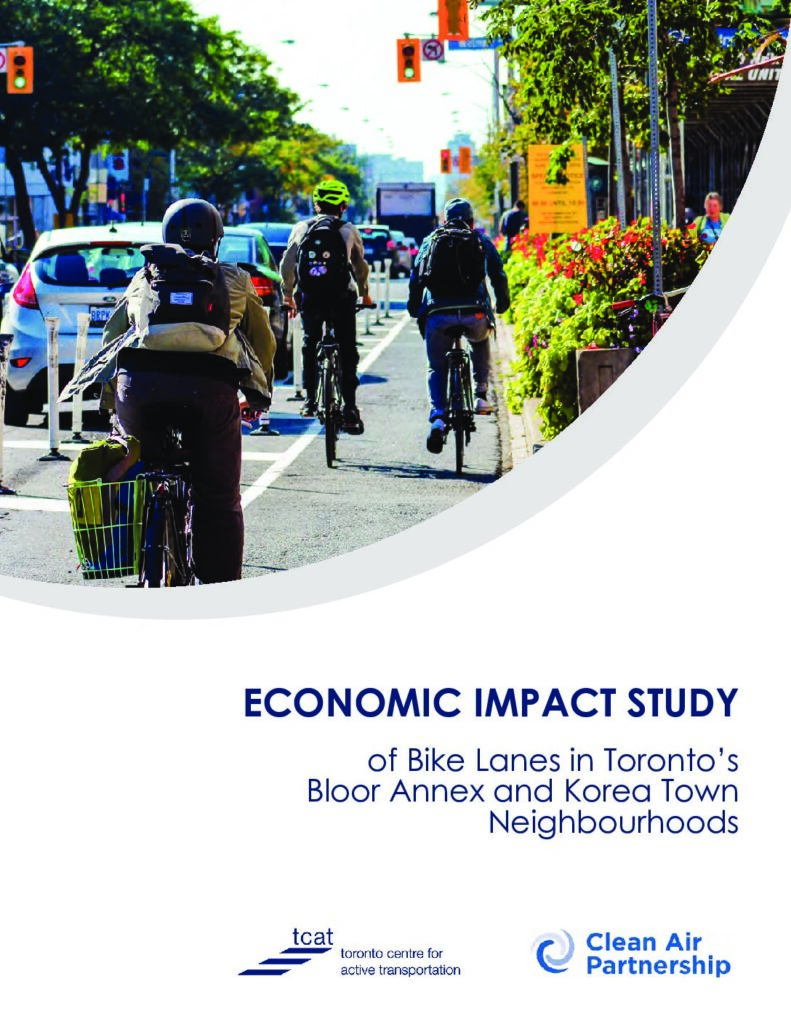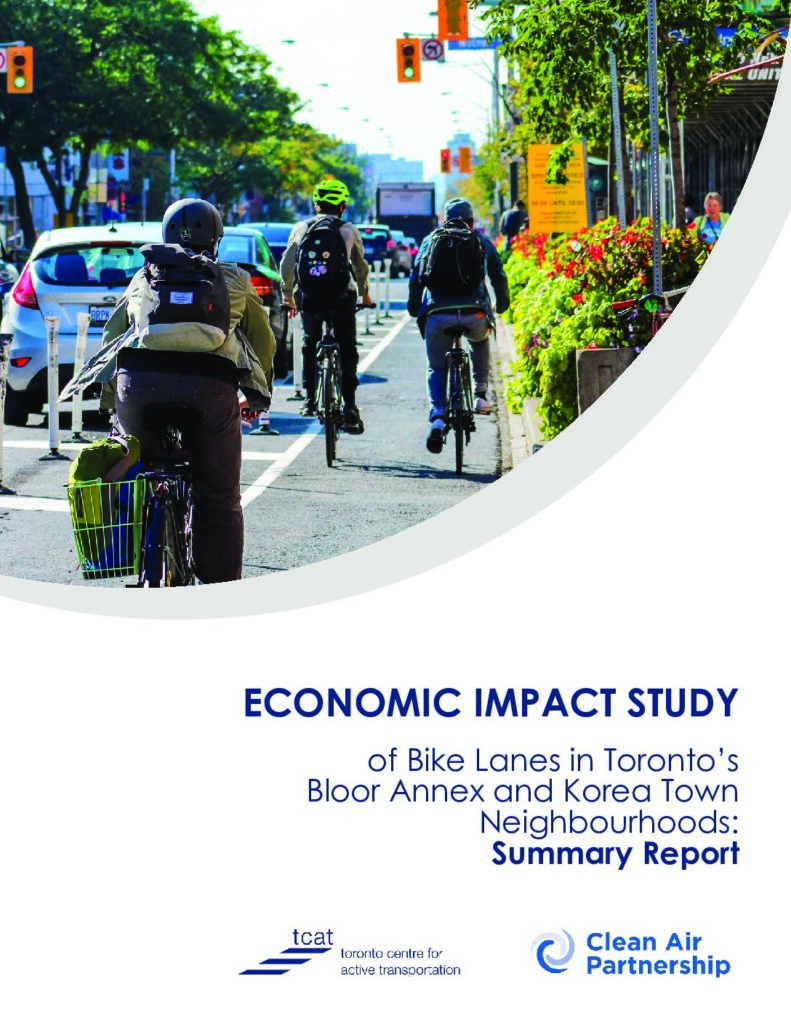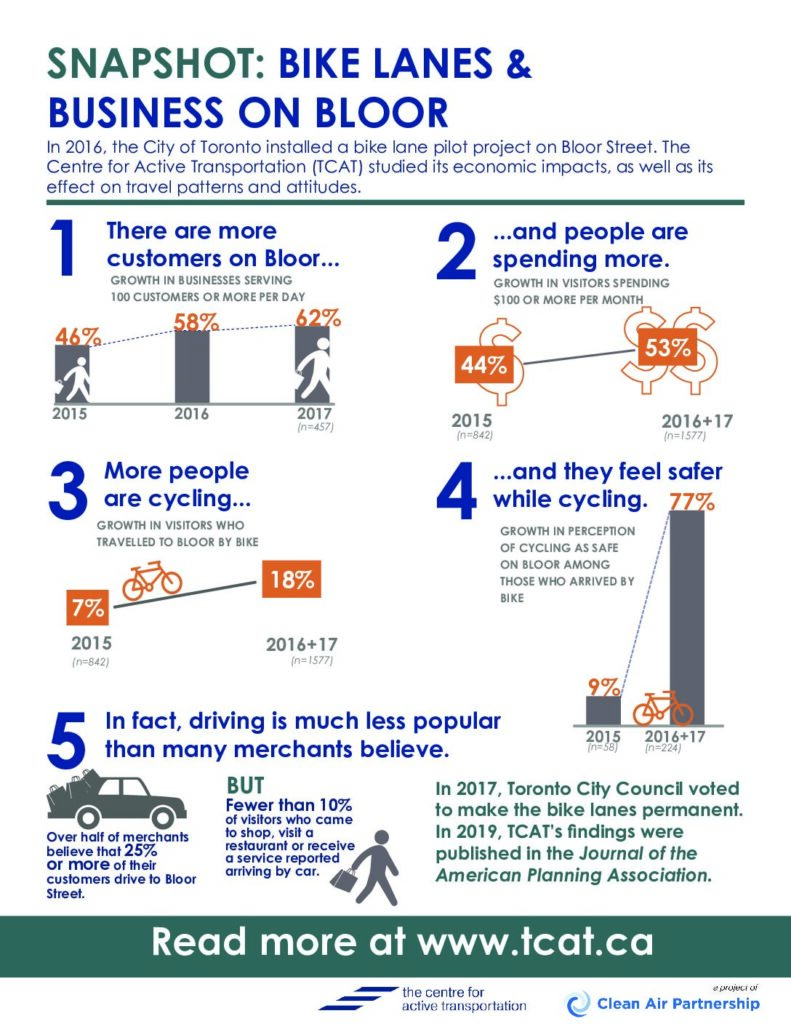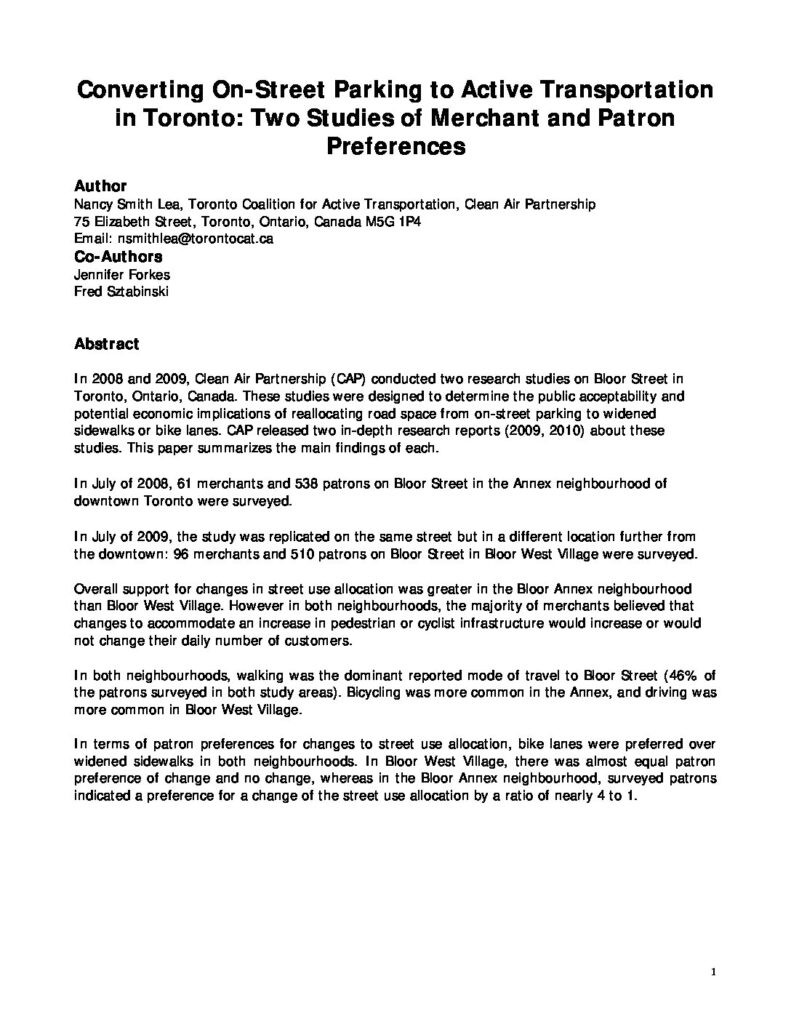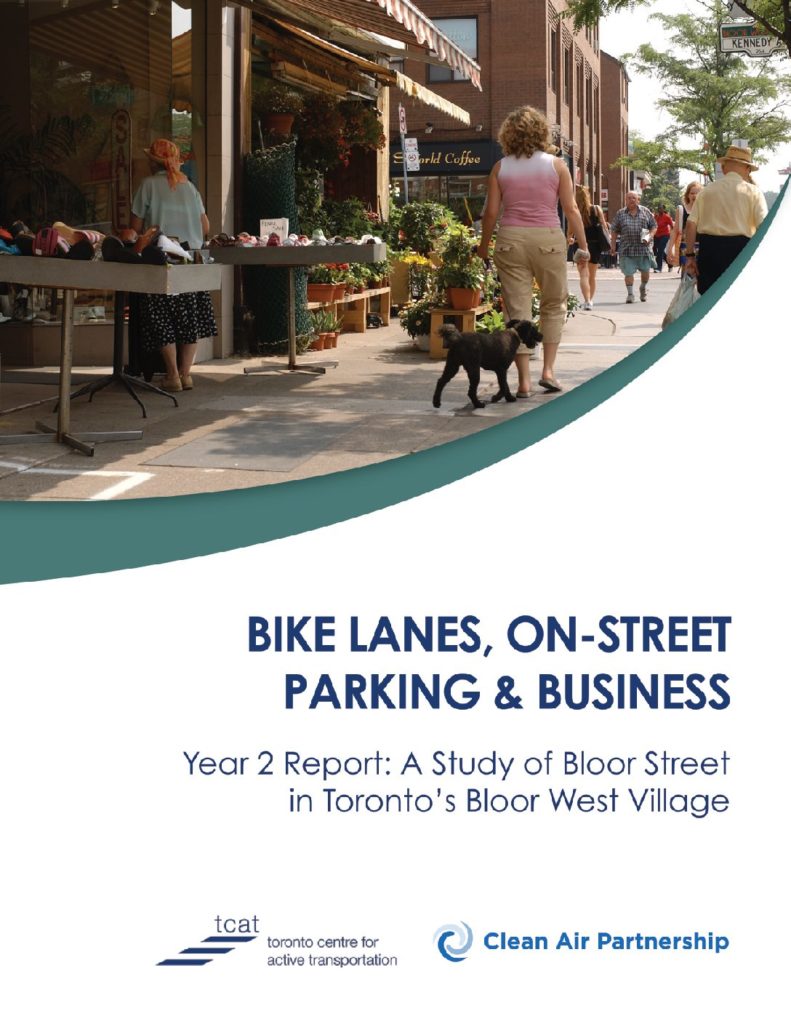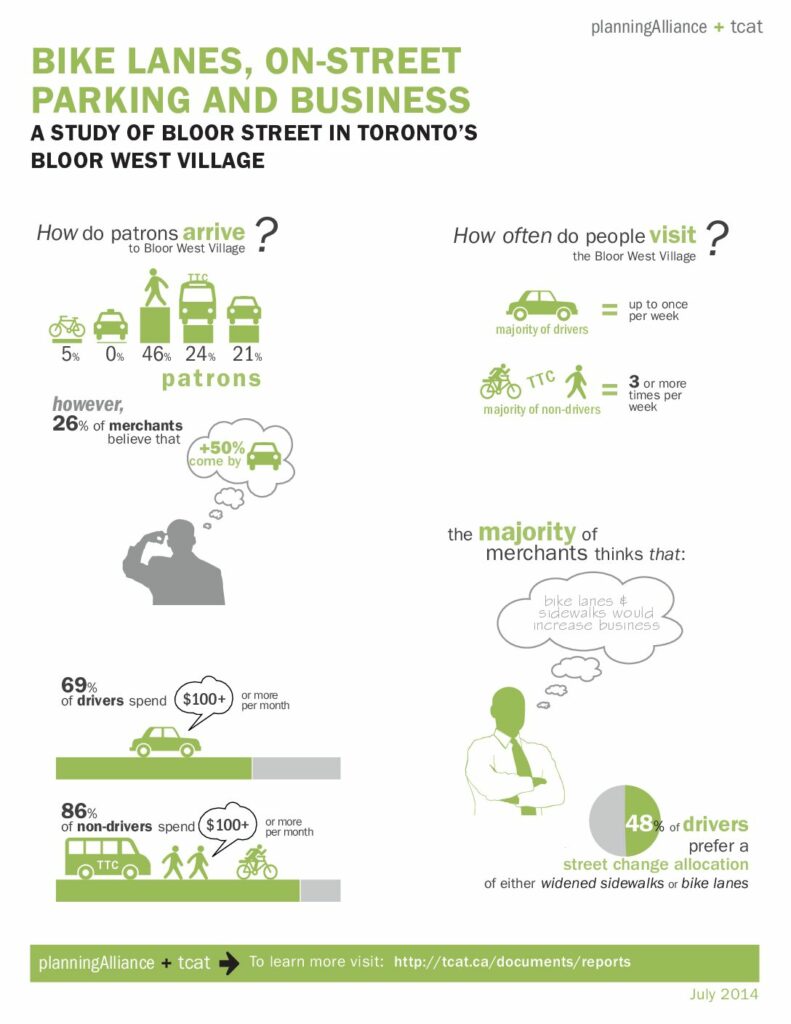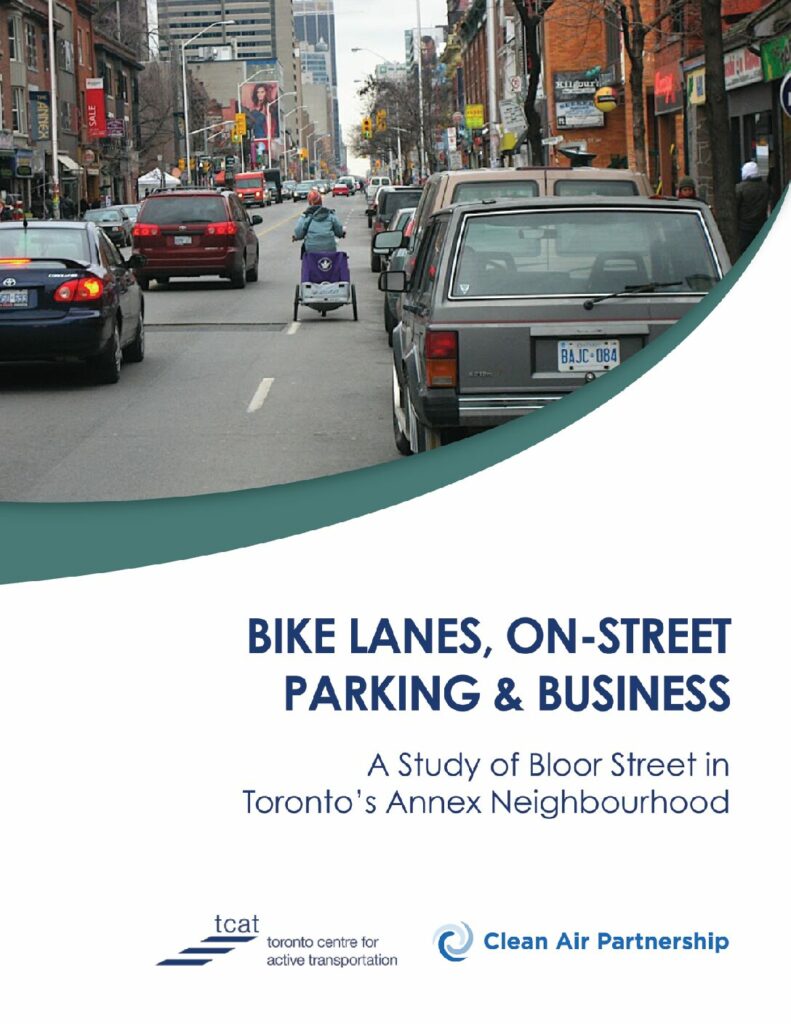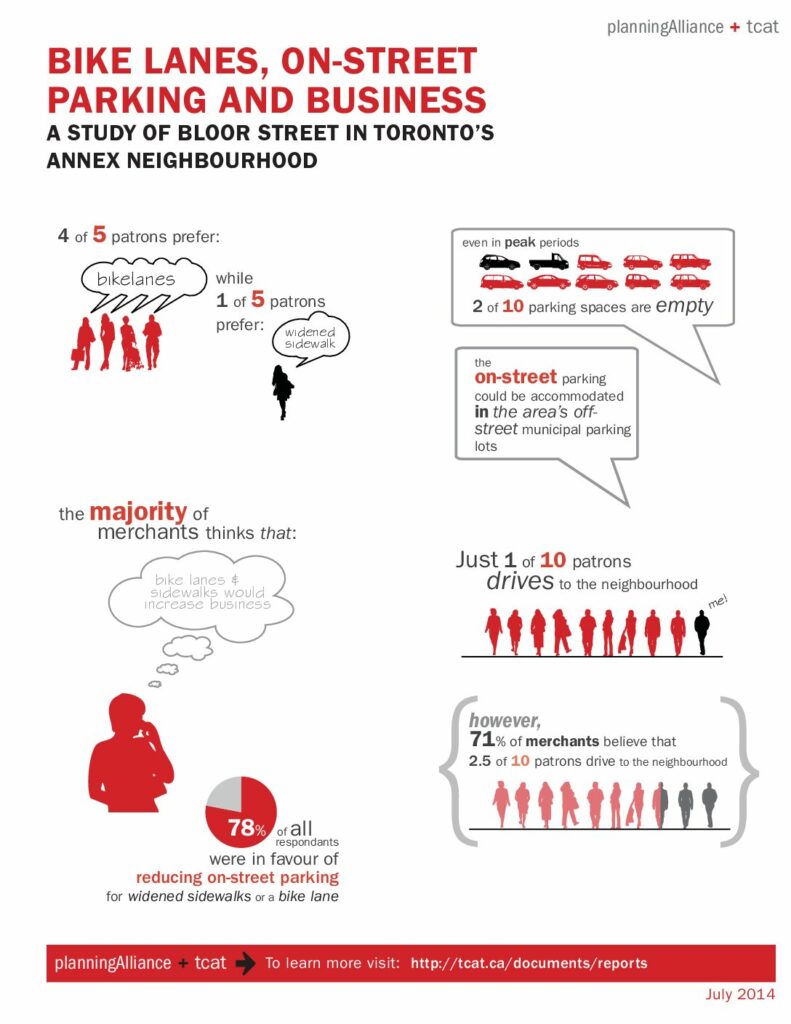Toronto is Canada’s largest urban centre, and, as in many other North American cities, removing on-street parking to install bike lanes can be contentious. On three occasions, between 2009 and 2017, The Centre for Active Transportation (TCAT) studied the local economic impacts (positive, negative or neutral) of removing on-street parking to install a bike lane and to understand the role played by the travel patterns and attitudes of both visitors and merchants. The findings have disproved the myth that parking is essential to downtown small business. Learn about each of our Bloor Street Bike Lane Economic Impact Studies and download the reports below.
In 2019, TCAT’s research into the impact of Toronto’s bike lane pilot project on Bloor Street was published in the peer-reviewed Journal of the American Planning Association (JAPA) in an article titled “Measuring the Local Economic Impacts of Replacing On-Street Parking with Bike Lanes“.
Also in 2019, when the City of Toronto undertook a study and public consultation for the Bloor West Bikeway Extension, TCAT was commissioned to create a Bikeways and Business on Bloor Street: Research Summary flyer, and to host a Bikeways & Business on Bloor: What are the Economic Impacts? webinar on January 23, 2020.

